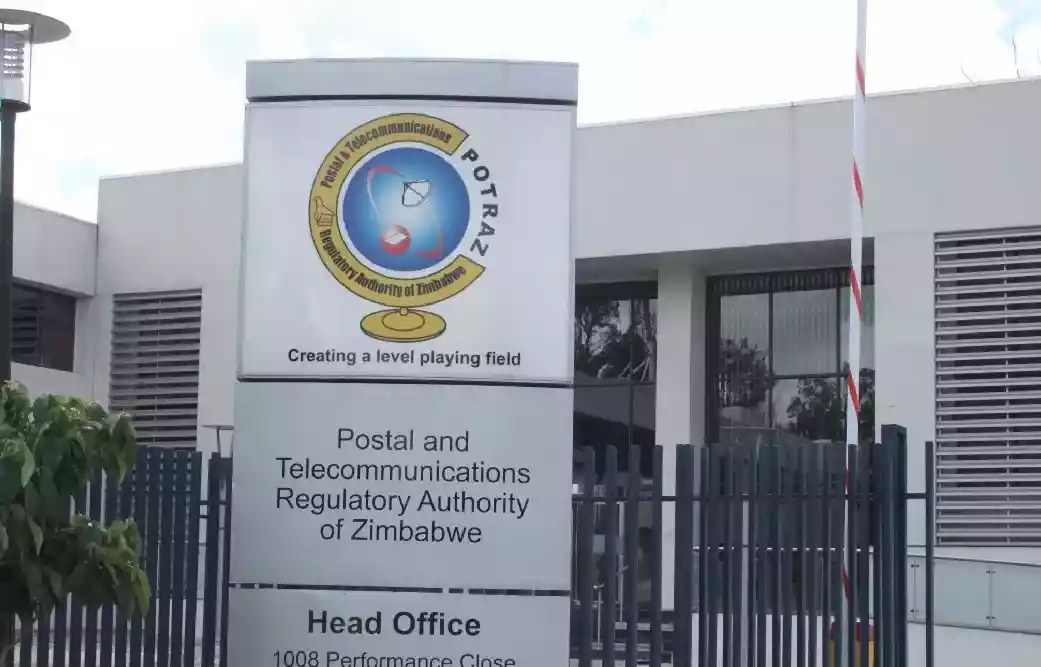
THE growth in global demand for lithium has led to an increasing number of new mining investments in Zimbabwe. Sabi Star mine became the latest lithium extraction operation to be commissioned by President Emmerson Mnangagwa in August.
It is reasonable to expect more capital to be assigned in that sector, as Zimbabwe is ranked as having the sixth-largest lithium deposits, worldwide.
The country is also at the threshold of Coal Bed Methane (CBM) extraction. A locally-owned entity named Alabara resources is reported to be establishing a new CBM mine, after feasibility studies proved the availability of commercial quantities of the resource.
Vast CBM resources are understood to be available in the Matabeleland North province of the country, particularly in Lupane, Gwayi and Hwange.
Around five more corporations are carrying out explorations in the province, with strong indications that, they too will be into commercial production before 2025.
On the other hand, Invictus Energy, an independent oil and gas company, is at advanced stages in the quest to prove the existence of oil and gas in the Cabora Bassa Basin.
A production sharing agreement was established as far back as January, 2021, with the framework on how the corporation and government will split the extracted oil between each other once discovered.
Apart from the possibility of new resources, Zimbabwe has operational mines already producing gold, nickel, platinum, coal, chrome and diamonds.
- Mr President, you missed the opportunity to be the veritable voice of conscience
- ED to commission new-look border post
- Zanu PF ready for congress
- EU slams Zim over delayed reforms
Keep Reading
Government revenue from the extractive sector is mostly generated through royalties charged on the minerals, taxes and profit sharing, in the case where mining joint-ventures have been established between the government and private sector.
Since mineral resources are non-renewable, it is crucial for the government to establish a framework, which it will use in order to ensure that revenue from the extractive sector is utilised for economic diversification and development.
Additionally, the responsible management of funds gathered from the mining sector will permeate the creation of a resilient economy, which will be more impervious to external shocks. It will have more fiscal space to meet all budget requirements and transfer some of the mineral wealth to future generations through the Sovereign Wealth Fund of Zimbabwe.
Available channels for value creation
There are essentially three methods, which the government can use to link resource revenues to development. The methods are not exclusive, meaning that, they can be utilised as a combination.
Firstly, revenues from taxes, royalties and profit sharing may be used to finance the countries’ development agenda. If human development is a priority, then education, healthcare, provision of clean water and electricity, are likely to be the programmes of choice.
With transformational revenues, cash payments to either local communities where extraction is taking place, or to a considerable section of the country's population, can be targeted.
Whereas, if public infrastructure or economic diversification are more urgent, then funds will be routed to those areas.
Secondly, the government can encourage "local content" policies, which promote the use of local suppliers in procurement and employment. In the case where local suppliers to the extractive sector need capacitation, revenues may be assigned towards their capacitation through investments in machinery, certifications, and other capital requirements.
For organisations, which employ locals, marginal tax concessions may be offered. It is crucial to outline that extractive projects, such as oil, gas and other minerals, characteristically take 10 or more years from exploration to significant or peak productivity.
For this reason, local procurement and employment frameworks will utilise much of the miners' available funds, before significant production starts.
The exploration and construction phases will typically involve industrial-level procurement, specialised and general employees.
Thirdly, it has become the tradition that several extractive corporations provide local community investments in order to strengthen their "social capital" (local approval).
In some cases, companies establish roads, bridges, irrigation, schools or clinics. Government should encourage such developments wherever the corporations are operational. Collaborative effort between government and the miners is also desirable.
A case in point is when a company has enough funds to build a school or clinic but does not have the capacity or assurance that it will be able to pay recurring expenses such as salaries.
In that regard, the company may build the infrastructure, whilst the government takes ownership of the recurring expenditures.
Defining development goals
At the outset, the government needs to set development goals, which it will to link to the inflows of natural resource revenues. This means that a predetermined portion of revenues from extractives will be directed to fund these goals. When there is clarity on the developmental targets, the connection between revenues and the development agenda is more direct and effective.
Measurability of the impact of resource revenues also becomes possible. The development targets may include spending the earned revenues on economic diversification, cash transfers, education, health, clean water, electricity, infrastructure, etc.
If the country is to achieve sustainable and robust growth, then resource revenues should be earmarked for economic diversification. A look at the experiences of Nigeria and Indonesia, describing how they invested their oil revenues, may provide pertinent lessons for Zimbabwe. When Nigeria began to experience significantly high oil revenues (1960- 1973) there were accompanying major forex inflows.
This led to a sharp appreciation of the local currency (naira).
Subsequently, agricultural and other exports, which were dependent on a relatively weaker naira, for their competitiveness, became more expensive in US dollar terms.
As a result, the agricultural sector suffered terribly, which drove the nation to be even more dependant on oil. On the other hand, in Indonesia, the oil and gas revenues were used to subsidise the agricultural sector through the provision of fertilisers, irrigation, roads and other rural infrastructure, where agricultural activity was concentrated.
The strengthening of the local currency, therefore, had limited impact on reducing the competitiveness of agricultural products in both the local and foreign markets.
Thus, farming thrived in Indonesia and continued to grow until it became a major agricultural nation, globally. From comparable starting points, before the discovery of oil, it eventually took Nigeria, until 2008, to reach the level of human development that Indonesia reached by 1980.
In the same manner, Treasury in Zimbabwe should focus on strengthening other sectors of the economy, such as export-agriculture, strategic manufacturing (niche or key products such as oxygen, textiles, tobacco processing, fertilisers), etc.
With regards to export-agriculture, funds may be availed for extension services, contract farming, transportation, storage and administration. This will increase forex-inflows and uphold both local employment and economic growth.
Unlike funding subsistence farmers, which drains fiscal revenues, yearly, export-oriented farming will yield income for both government and households, which preferably, should be rural-based.
The Sovereign Wealth Fund of Zimbabwe can drive these diversification programmes.
A portion of the revenues may be used to make cash transfers to local communities where the extraction of resources is occurring. This may be particularly desirable for peri-urban and rural areas, as the additional income will ignite economic activity in the isolated regions.
With substantive cash payments, the areas may become industrialised or contribute significantly towards reversing urbanisation and pressure on public services in the cities.
As an example, paying a monthly stipend of US$2 per each individual in the rural areas may have a direct cost to Treasury of US$22 million per month, or less.
Rural inhabitants are around 11 million; using an estimated country population of 16 million, according to the World Bank, with the rural portion making 67,4% of the figure.
If commodity revenues are transformational (major), the payments seem possible. Such disbursements may be exactly what it takes to spark burgeoning rural economies. With vigorous rural economies, Zimbabwe's overall economic potential will be fully unlocked.
In 2022, the Amalgamated Rural Teachers Union of Zimbabwe (Artuz), published a research document titled Beyond geographies of inequality: Public Education Financing in Post-Covid Zimbabwe.
The findings of the research were that 63% of rural pupils dropped out of school in 2022, and most of them are girls. The cost of education remains restrictive, especially to the less-affluent urban and rural residents.
A lack of reading and numeracy skills was also observed in rural pupils, with an incidence of 85% and 86%, respectively. Further, the educational infrastructure and quality of teachers is not up to par, whilst the lack of access to clean water and electricity do much to compound the experiences of students subject to rural education.
The impetuous challenges, which these circumstances will bring to the students and their communities, in the next few years, include poverty, unemployment, social isolation, inequality and underdevelopment.
If the government is keen on reversing or mitigating some of these challenges, then a portion of Treasury's income from the extractive sector needs to be channelled to rural areas.
When there is fiscal capacity (extra revenue), this should be a priority area. Government spending may earmark, completely free education in those parts of the country.
Additionally, incentives such as free meals, books, and, or, uniforms, will motivate the pupils to complete their classes, at least from grade one, to Ordinary Level.
Leveraging resources in this manner will offer multiple direct and indirect benefits, including the reversal of urbanisation and subsequently, pressures on public services such as water, electricity and waste management in the cities.
Deepening investments in reliable electricity generation, provision of clean water and public infrastructure will also be viable designations of the resource revenues.
Managing risks and expectations
In some cases, the citizens may wrongly interpret that a discovery of new resources directly means that they are to immediately shift from poverty to wealth. Therefore, when there is no management of such expectations, there is bound to be discontent, which, in worst cases, may break into insurgency.
This has been the situation in the Niger delta, where local communities feel deprived of the region's oil resources. Closer to Zimbabwe, armed-conflict broke out in Cabo Delgado in Mozambique, on the same basis.
It is thus vital for government to convey the delays that should be expected by the public in enjoying the effects of new resource discoveries.
A number of risks also need to be managed, for the prudent administration of revenues. Chiefly, it is vital to resist spending revenues before they are earned. This can be done when a government borrows, with the target of using future income from the extractive sector, as a means to repay the borrowed amount.
In 2012, Zambia borrowed US$750 million to fund projects in energy and transportation, with the expectation that copper production would continue to drive economic growth.
However, just two years later, copper prices fell by 30% and the local currency (Kwacha) depreciated. Further, the country's credit rating was downgraded, owing to concerns over its ability to service its growing public debt. Zambia is now on an IMF programme to resolve its debt overhang.
Since prices of commodities are volatile, it is judicious to forecast revenues based on average or lower price-levels. Using highest-possible prices in revenue forecasting is not advisable.
Additionally, for commodities with extremely volatile prices, revenues must not be committed towards recurring expenditures. Rather, once-off or capital investments are suitable in such cases. Ultimately, it is crucial for government to maintain policy consistency, from the time when exploration for resources commences to the construction of mines.
Without consistency in government policy, investments will be delayed or rerouted to other destinations, apart from Zimbabwe.
- Tutani is a political economy analyst. — [email protected].











